
Journey from Bangkok to Bali: Following the Spirits
Dawn Rooney
Twenty-eight hearty and enthusiastic souls ventured on a ‘Journey from Bangkok to Bali’ in March 2015.
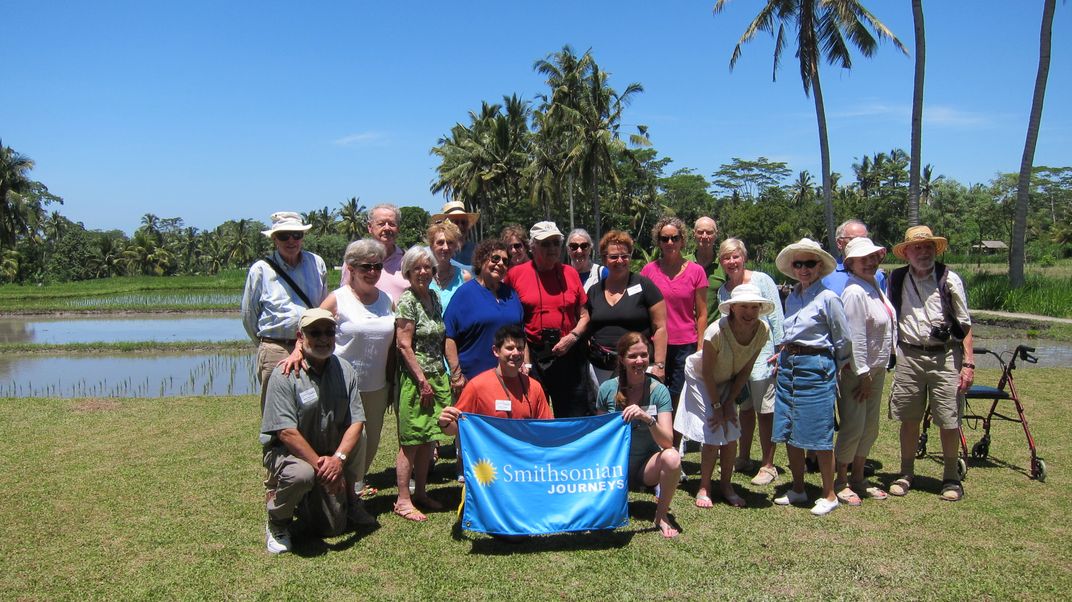
It encompassed four countries (Thailand, Malaysia, Singapore and Indonesia), six modes of transport (plane, bus, tuk-tuk, van, train and raft), 2,000 years of history and five religions (Animism, Buddhism, Hinduism, Islam and Confucianism). This broad diversity, however, belies the unity of these countries that comprise the region known today as Southeast Asia. They are united by similarities in culture, climate, flora, fauna, and, above all, a primitive, universal belief in Animism or spiritual forces. It is one of the oldest and most widely accepted forms of worship in Southeast Asia.
Spirits abide everywhere – on the ground, in the mountains, water, stones and much more. If treated well, they live harmoniously amongst high-rise buildings in modern, developed cities such as Singapore and in tropical jungles like the Sacred Monkey Forest Sanctuary in Ubud (Bali). All spirits must be appeased, whether good or bad. Thus, flowers as offerings to the spirits abound from a fresh jasmine garland in Bangkok; to a floral tray in Bali for ancestors; to flowers showing respect to a deity.
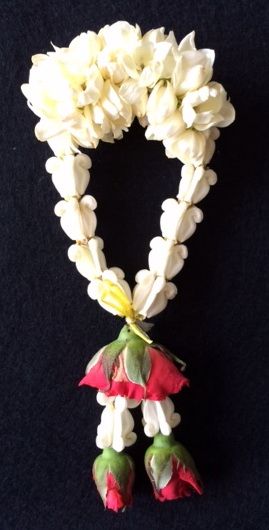
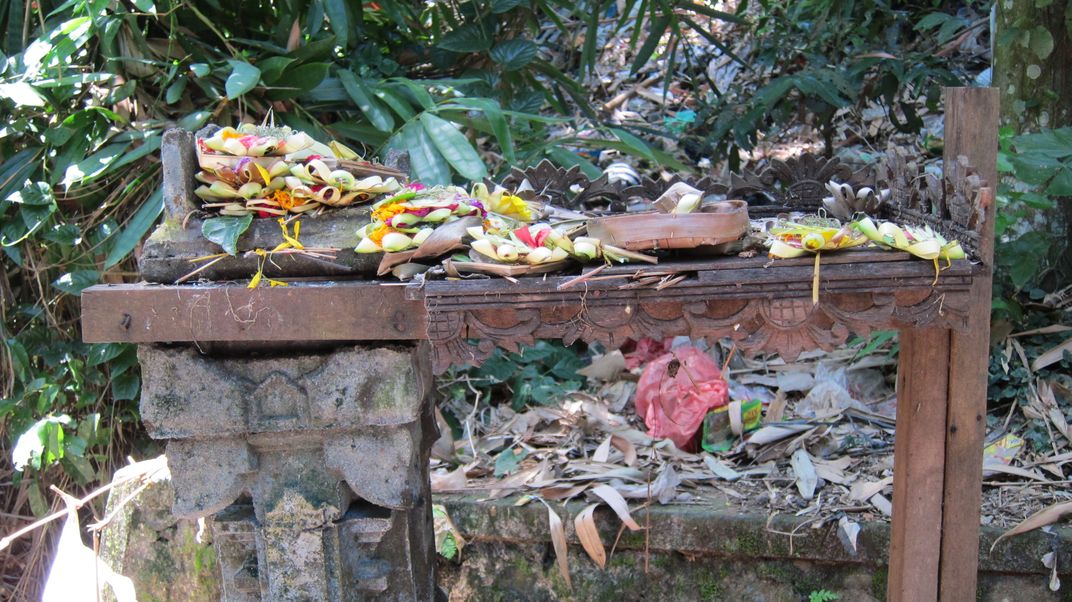
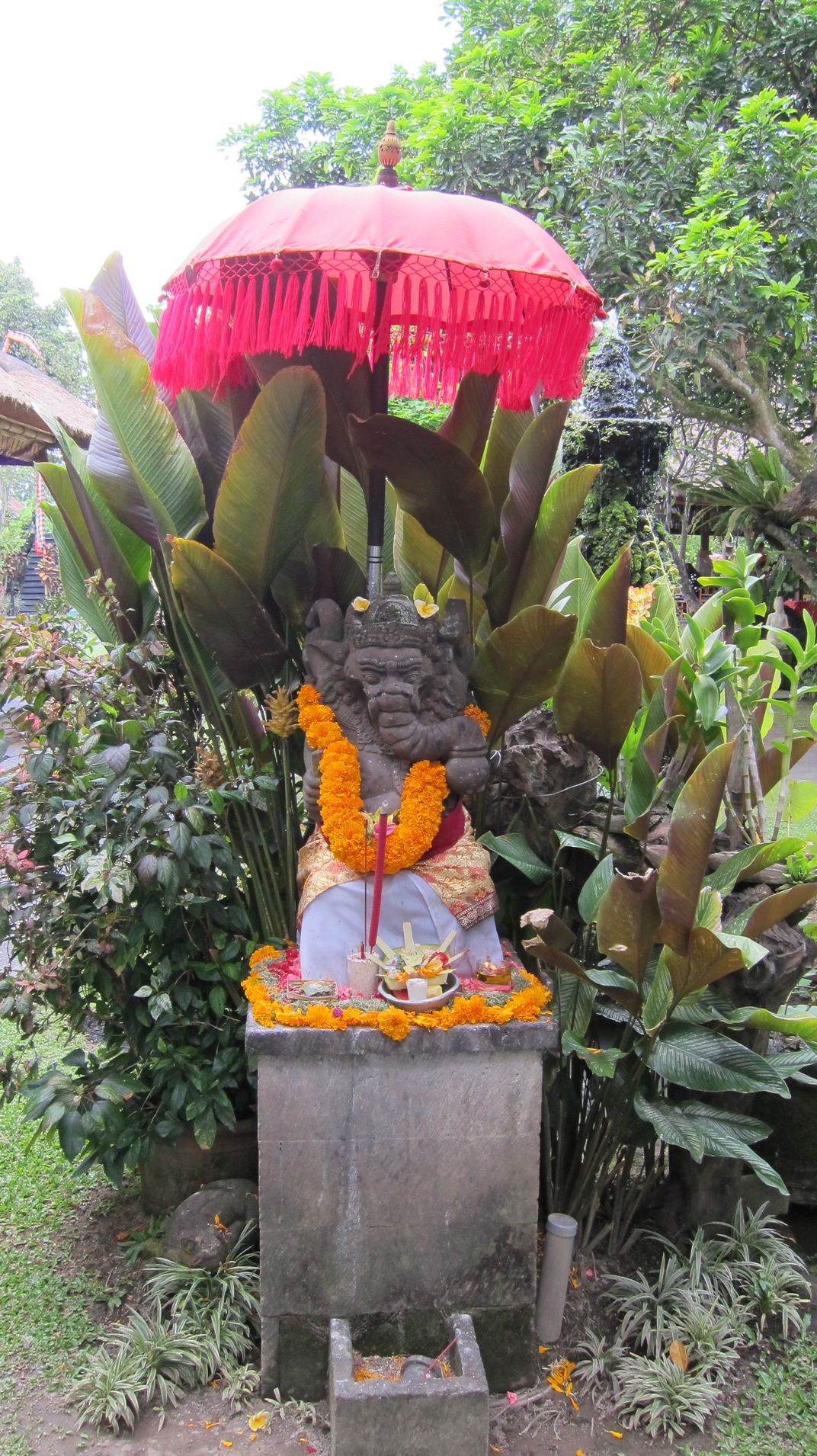
In Thailand, a “Spirit House” is constructed to assuage the spirits. Every structure (public and private) must have one, regardless of the wealth or status of the owner. As the name suggests, it is a miniature house built for the spirits. It stands on a pillar (about eye level). Although the style and size are according to choice, it must face north, northeast or east and it cannot stand in the shadow of the building that the resident spirits protect. An astrologer determines the day and time that the house is put into place and that is followed by a ceremony to invite the spirits to move in to the house and to become its guardian. Daily offerings of fresh flowers, incense, candles, water, food, even whiskey and cigarettes are made to appease the spirits. The Spirit House that guards the Jim Thompson compound in Bangkok is an exemplary example of these features.
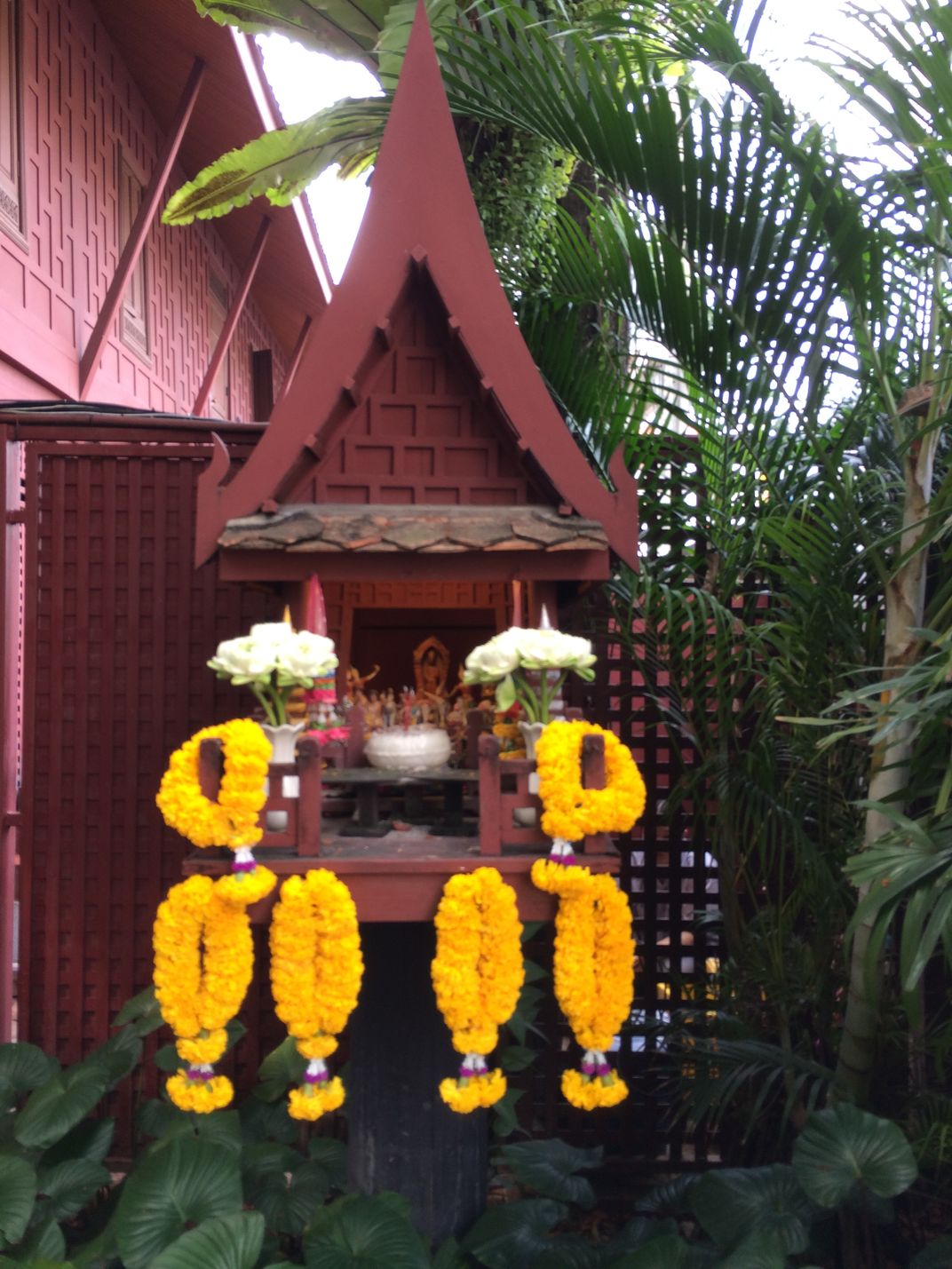
The traditional-style teak wooden house stands at the entrance to the compound welcoming visitors and keeping evil spirits at bay.
Spotting the multitude of mythical beings that are intertwined with the local beliefs was a favorite pastime of our group. The multifaceted world of spirits and mythology includes angels, guardians and ancestors, sacred trees wrapped in blessed cloth, Indian soothsayers, Hindu gods and Chinese mythological figures. Many of these strange creatures live in a mythical Hindu-Buddhist forest covered with trees, vines and flowers and called “Himaphan” located in the Himalayas on the slopes of Mount Meru, the axis of the universe. The forest is invisible to the eyes of us mortals and we can never approach or enter it. The inhabitants are composites of humans and animals such as the elegant female kinnaris at the Temple of the Emerald Buddha in Bangkok, which are golden sculptures with a human head and torso and the wings, legs and claws of a bird.

Garuda, the king of beasts, adorns every building in Thailand. Half-bird, half-man, he is the mount of the Hindu god, Vishnu, the preserver, and stands by ready to take his god soaring through the universe wherever he is needed. Garuda is a powerful looking figure in a stately stance with a falcon-like head, a human torso, and outspread wings and the talons of a bird.
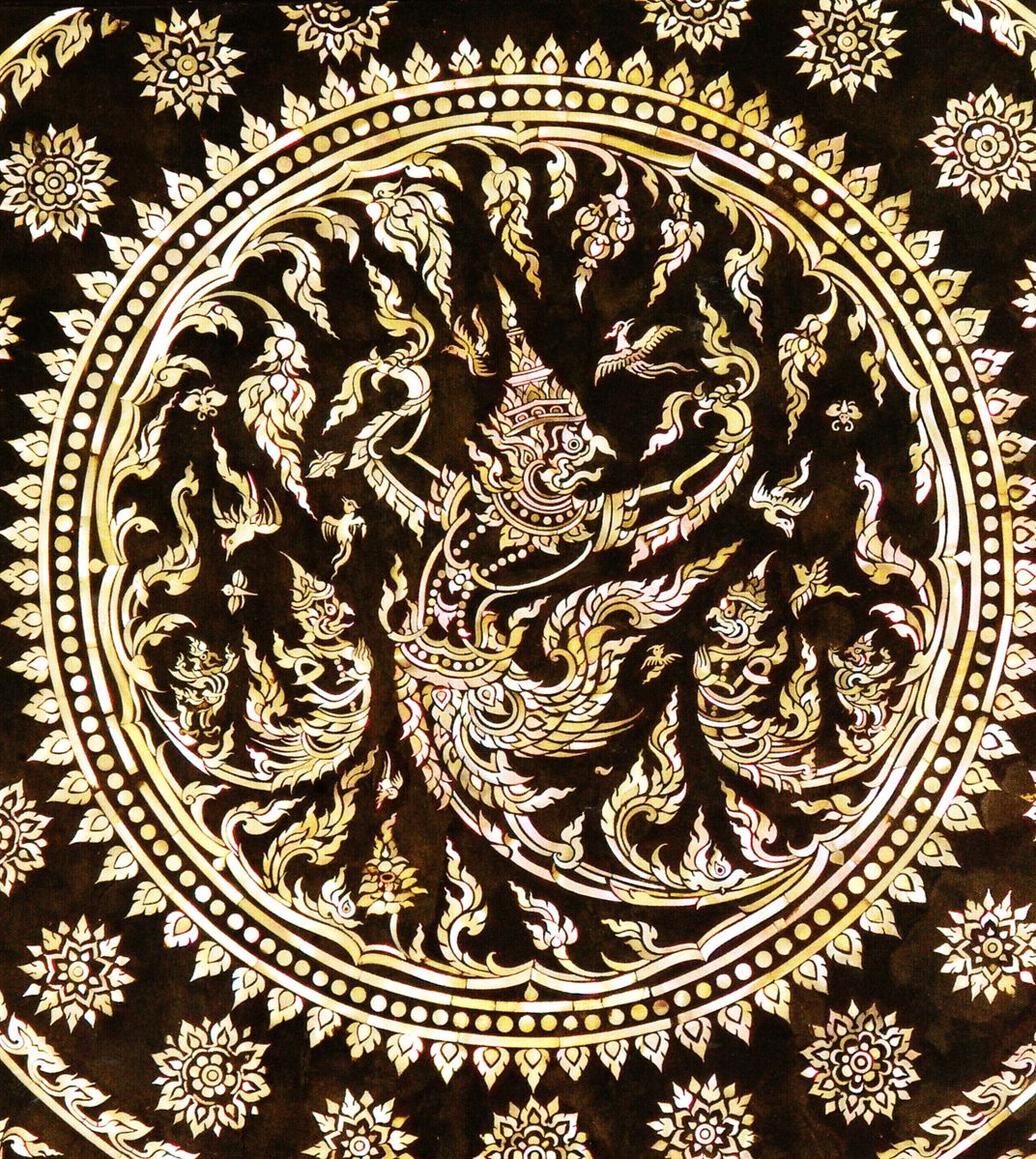
On royal buildings in Thailand Vishnu is often mounted on Garuda. Some may wonder why a Hindu god would be so prevalent in a Buddhist country. The kings of the present dynasty, Chakri, identify themselves with Rama who is an incarnation of Vishnu. All official government stationery, uniforms etc. bear an image of the Garuda as an indication of its loyalty to the king.
Mythical guardians abound. We encountered them at the Temple of the Emerald Buddha in Bangkok, Thian Hock Keng, the Chinese Hokkien temple in Singapore and at Tampak Siring, the holy spring temple in Bali. Guardians are oversized and often in pairs standing at the entrances to temples.
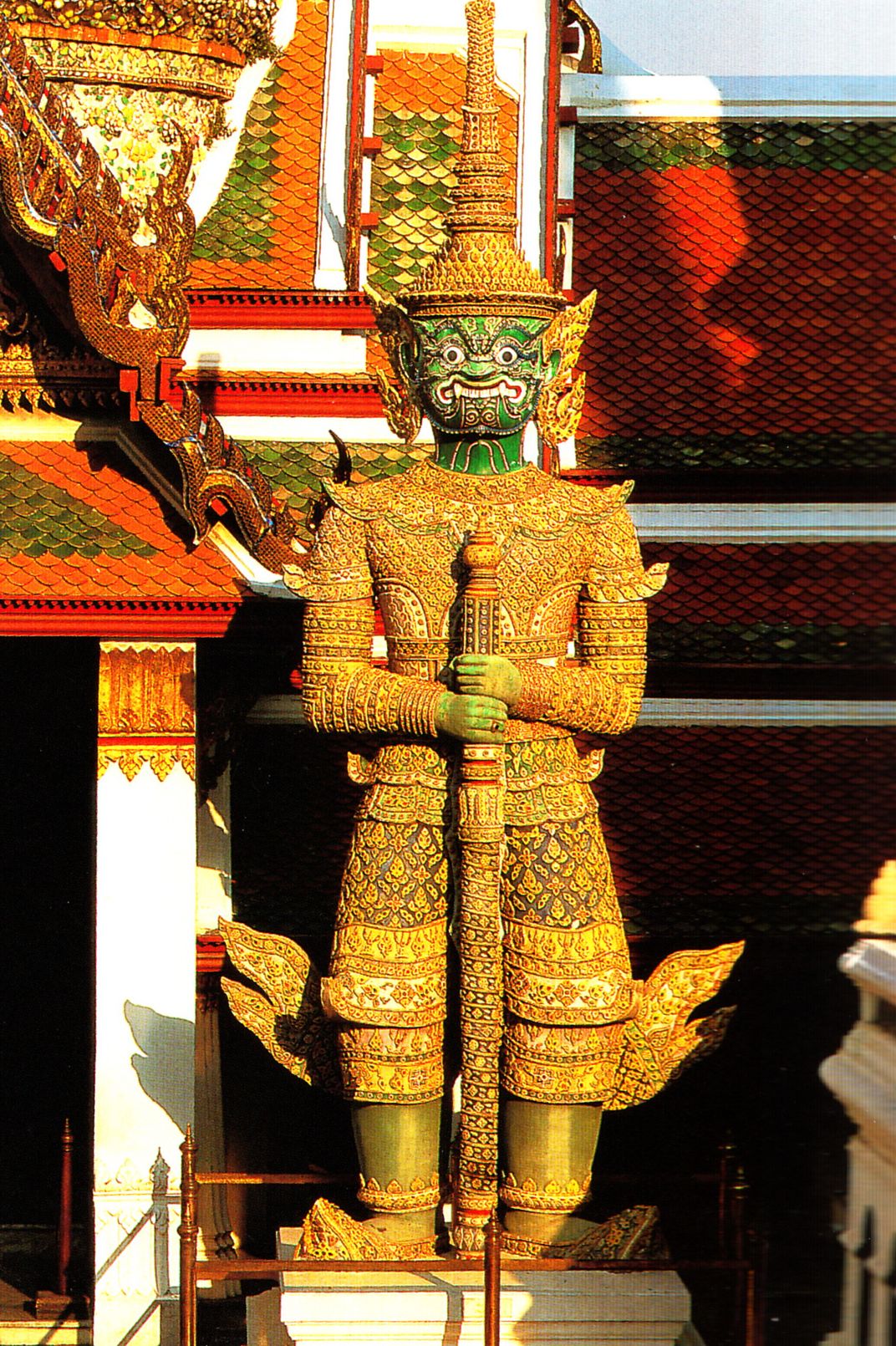
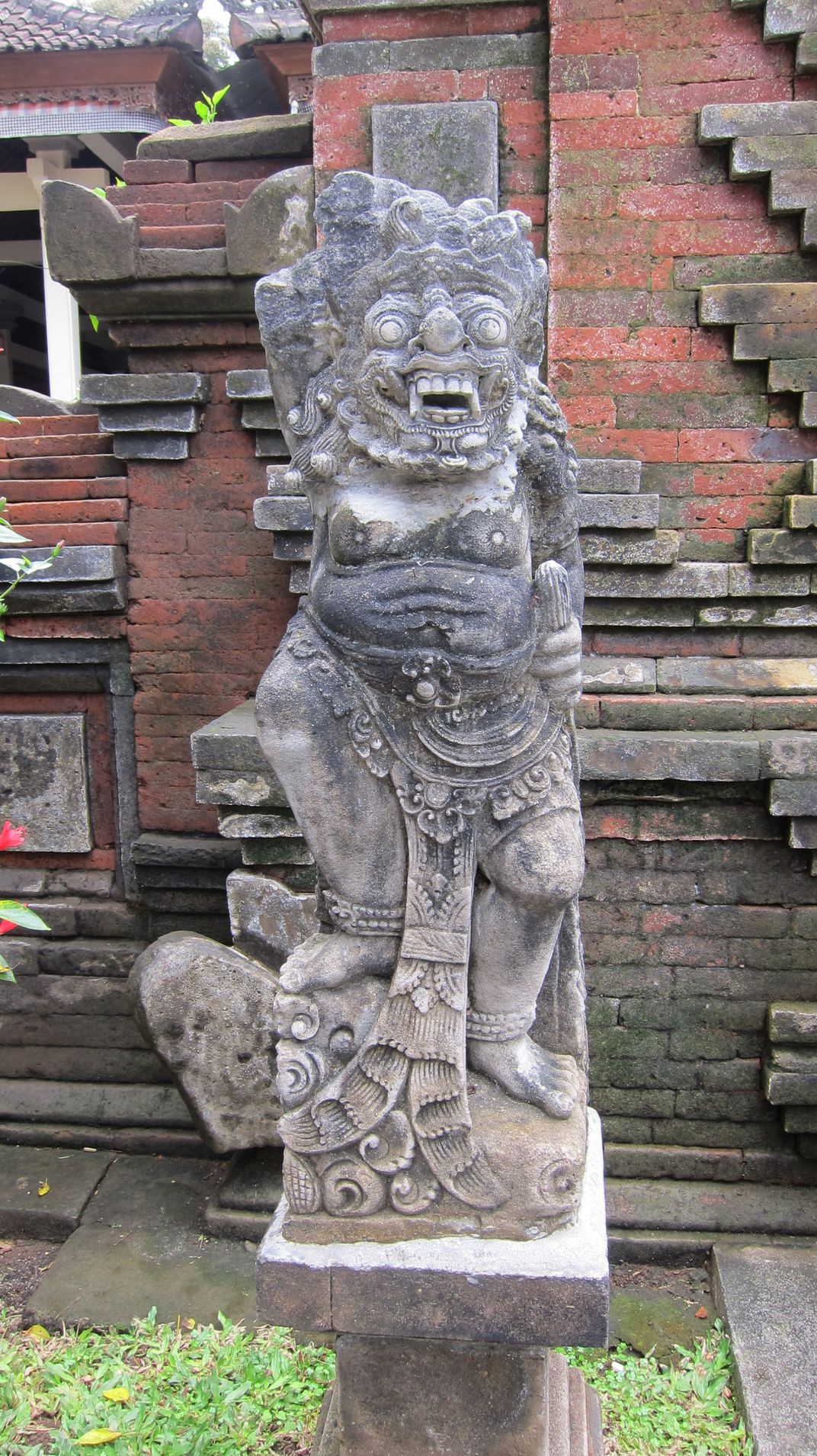
The Merlion, Singapore’s national mascot, is a wonderful, mythical creature that stands majestically tall (h=28 feet) in a park on the waterfront overlooking the avant-garde Marina Bay Sands Hotel.
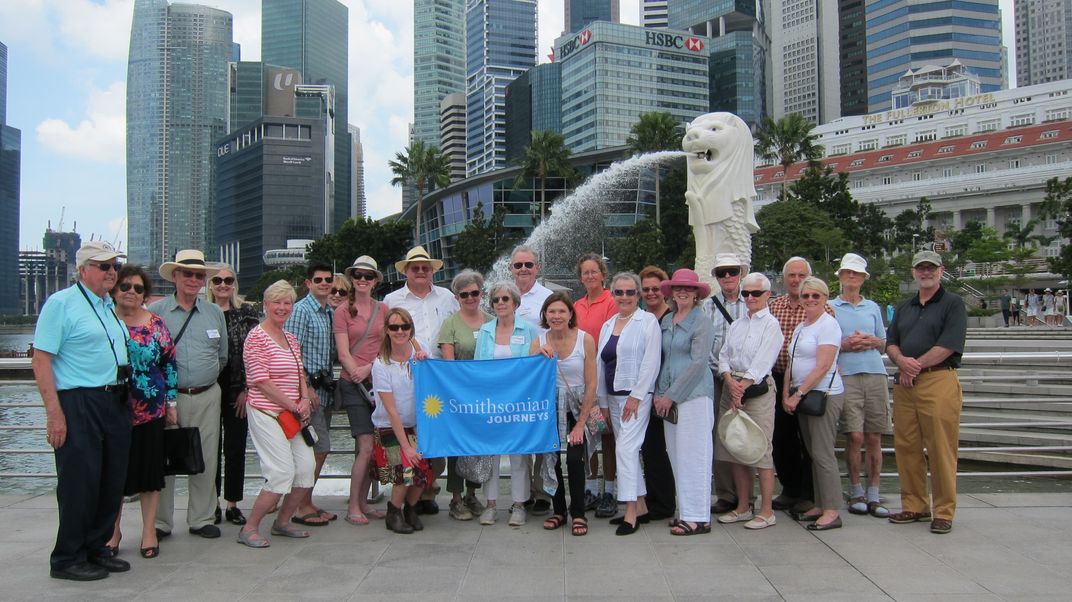
He is a free-standing sculpture with a fish-like body and a lion’s head. The combination is mindful of Singapore as a fishing village eons ago and Singapura (“lion city”), the original name of the place.
The worship of ancestral spirits pervades Malaysia and Singapore. Lavish temples, inspired by Chinese culture, are brilliantly colored in red and gold with elaborate decoration to honor the ancestors of the living.
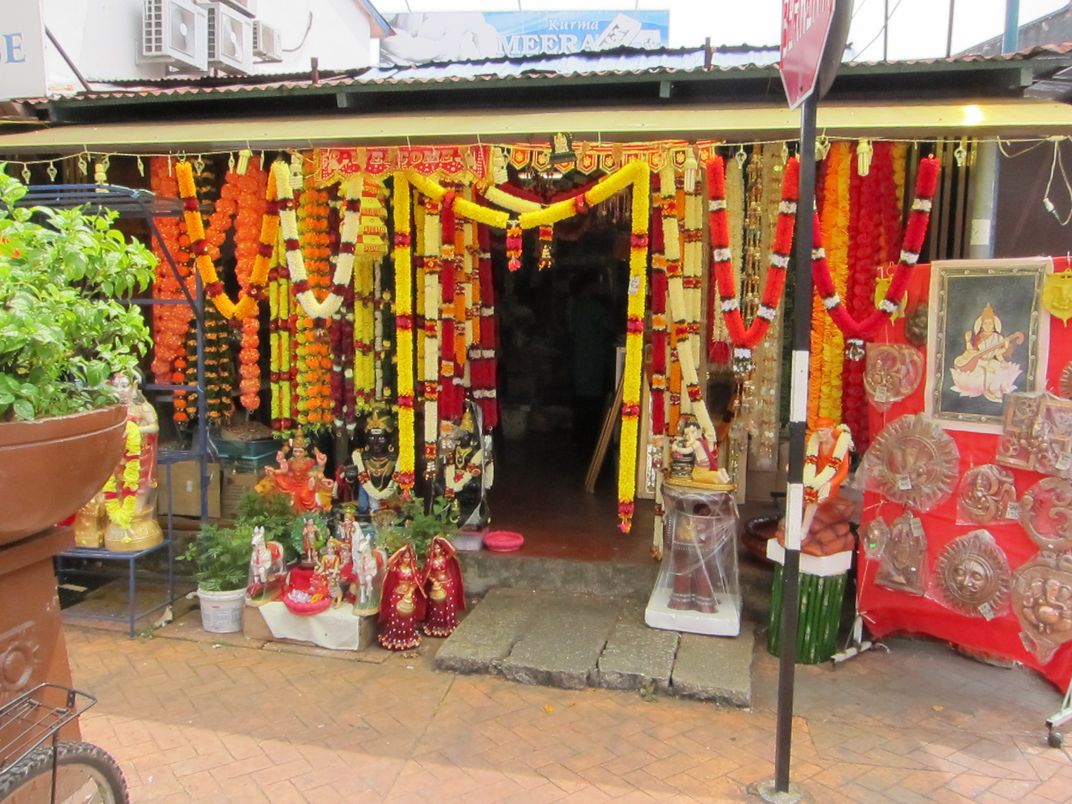
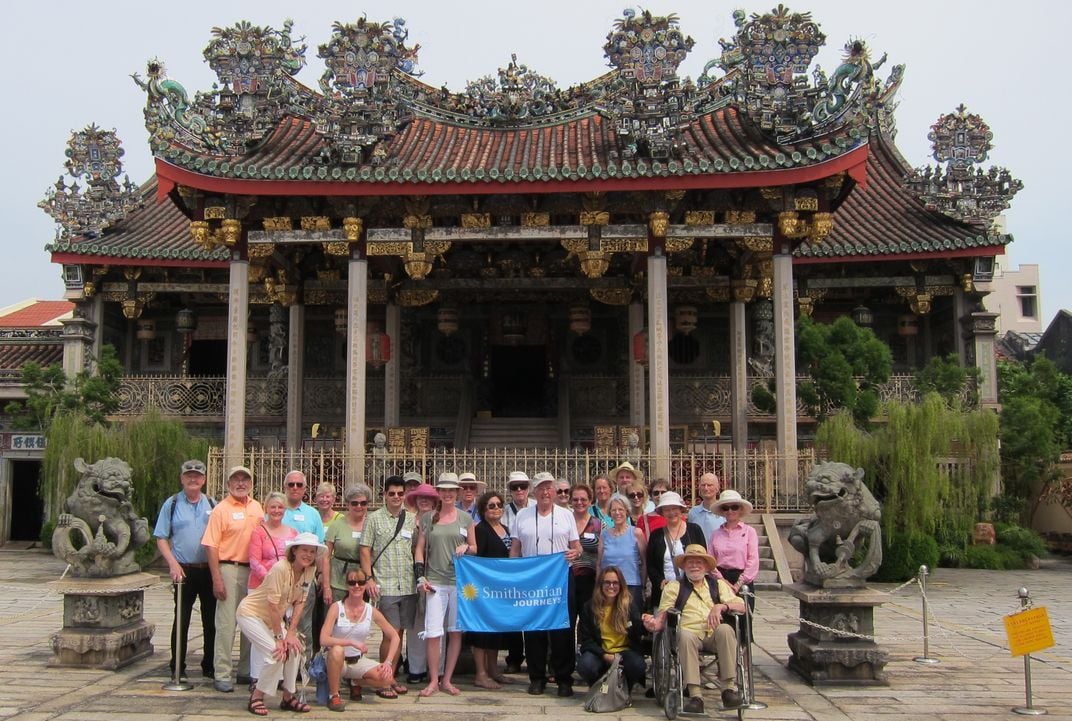
The Ramayana, the greatest Hindu epic of all time, has penetrated the arts and cultures of all four countries. The lengthy story is the battle between good and evil told through the characters of Rama, the perfect ruler, and Sita, his devoted wife. A demon abducts her and Hanuman, General of the monkeys, a much loved character in the story, appears in a series of action-packed adventures and ordeals to assist in the rescue of Sita—seen as a fearsome creature in a sculpture in Bali and in his giant form on a mural painting in Thailand.
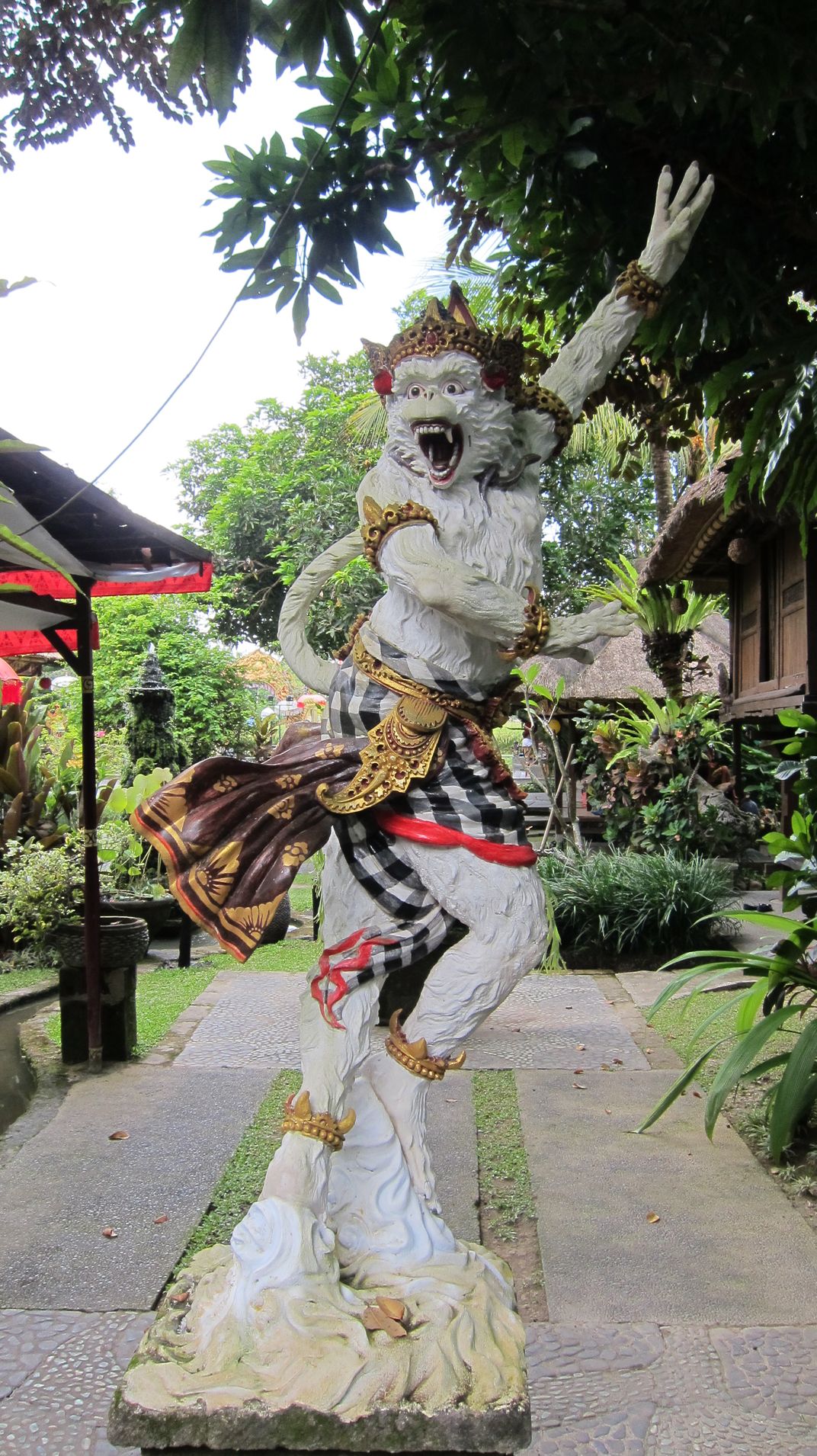
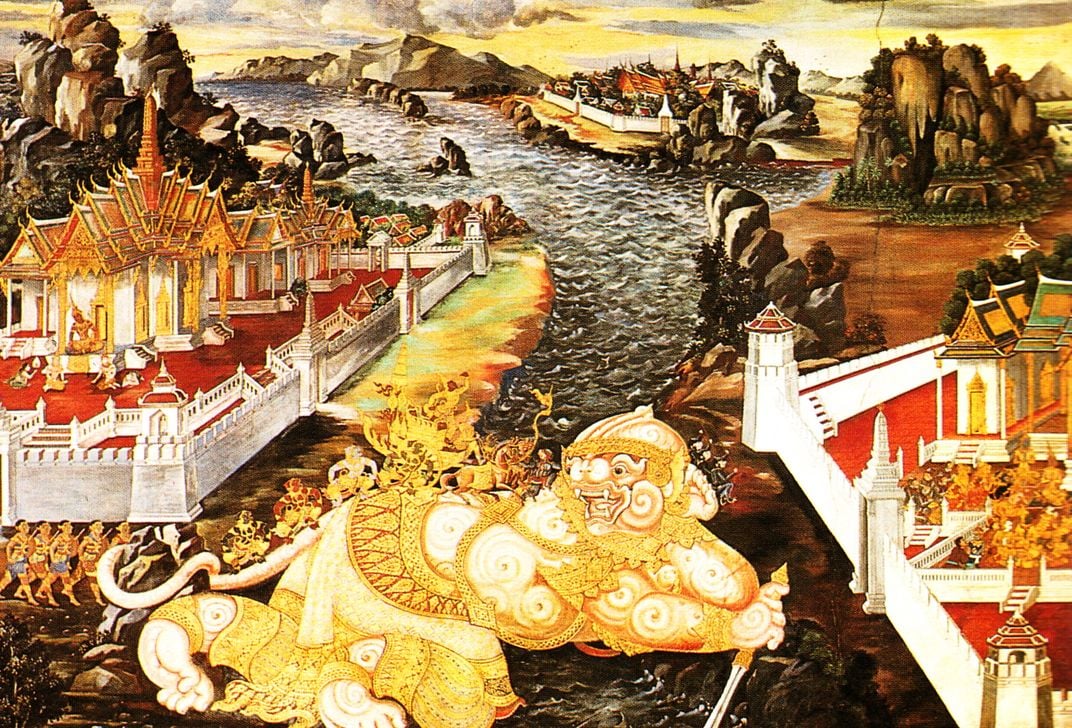
Yes, spirits and mythology are alive and well in Southeast Asia despite the onslaught of Westernization!

/https://tf-cmsv2-journeys-media.s3.amazonaws.com/journeys/catalog/cover_image/Mar_24_SJ_Cover.jpg)
 Be the First to Know
Be the First to Know